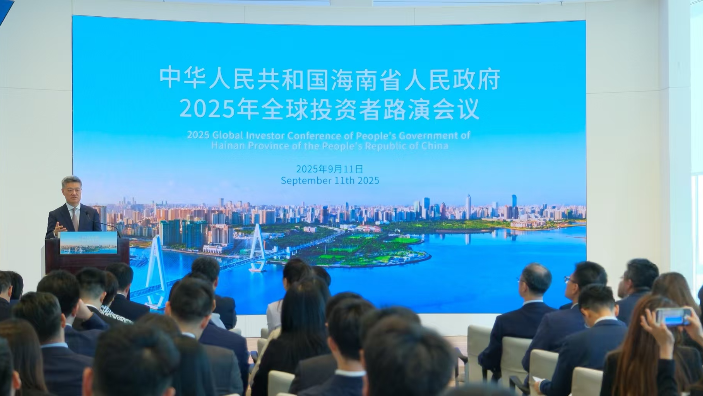By continuing to browser our site and use the services you agree to our use of cookies, Privacy Policy and Terms of Use. You can change your cookie settings through your browser.
Hainan Province boasts China’s only national tropical rainforest park, home to the country’s best-preserved, most biodiverse, and largest contiguous area of tropical rainforest.
Why should we protect the tropical rainforest? In addition to functioning as the green, beating heart of Hainan and a tropical species gene bank, it also plays a significant role in the world’s climate as a carbon sink, a natural reservoir that absorbs and stores the atmosphere’s carbon, mitigating global climate change. With China’s commitment to achieving carbon peak and carbon neutrality goals by 2030 and 2060 respectively, it’s critical to pay more attention to enlarging, managing, and utilizing this all-natural carbon sink.
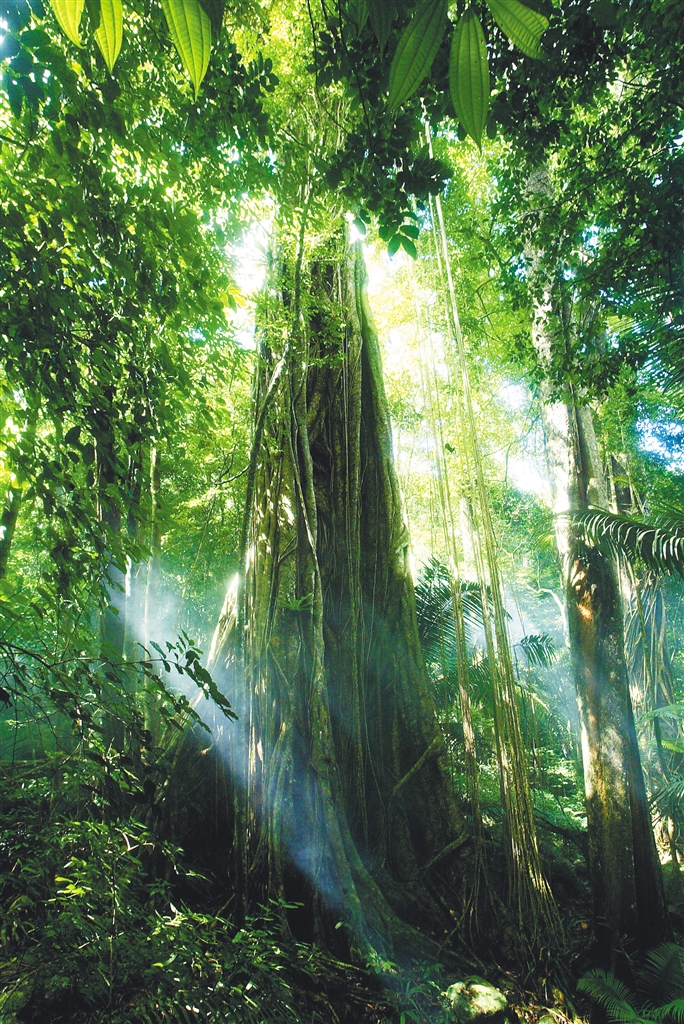
Tropical rainforest in Bawangling. SU XIAOJIE
"Lock" carbon dioxide inside the forest
The Global Forest Resources Assessment 2020 of the Food and Agriculture Organization of the United Nations showed that the total amount of carbon locked in the earth’s forests was 662 gigatonnes in 2020, accounting for about 77% of the carbon stored in the total vegetation of the planet.
This means that planting trees can enhance carbon sinks, and that afforestation is a good way of reducing carbon emissions. But how is carbon dioxide, the greenhouse gas, “locked” inside forests?
The mystery lies in the traditional, natural process of carbon capture and storage. From the moment a tree starts to grow, carbon dioxide in the air is being absorbed as the tree performs photosynthesis. After being transformed into solid carbohydrates, the carbon is stored in the trunk, branches, leaves, and roots of the tree.
During an experiment conducted by the Jianfengling National Field Scientific Observation and Research Station, when testing trees growing in Jianfengling’s tropical rainforest, they found that the carbon content of each part of the tree measured 51.08% for trunks, 50.54% for roots, 50.38% for leaves, and 49.40% for branches.
This shows that carbon makes up nearly half of the biomass of a tree. The bigger and taller a tree is, the more carbon it can store.
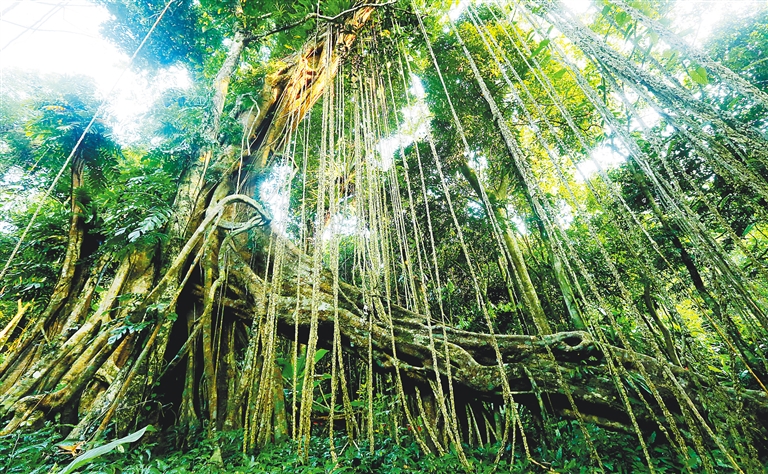
A banyan tree in Hainan's rainforest. SU XIAOJIE
It is worth mentioning that even though the rate of carbon sequestration slows down after trees mature, they never stop absorbing carbon during their lifetimes, and can continue to store carbon for an even longer period of time after they are made into wood products. Thus forests have obvious advantages —such as a long storage time and large average annual accumulation rate — over other carbon sinks, making them one of the most economical, safe, and effective types of the carbon sink on the planet.
Hainan's tropical rainforest: A super carbon sink
Research from the Jianfengling Ecological Station shows that Hainan’s mature tropical rainforests can store more than 340 tons of net carbon per hectare.
"Generally speaking, the faster trees grow, the greater the forest's ability to sequester carbon," said Chen Zongzhu, a researcher at the Hainan Academy of Forestry. He added that compared to forests growing in temperate areas, trees at the same growth stage in tropical rainforests grow faster, and thus have greater potential as carbon sinks.
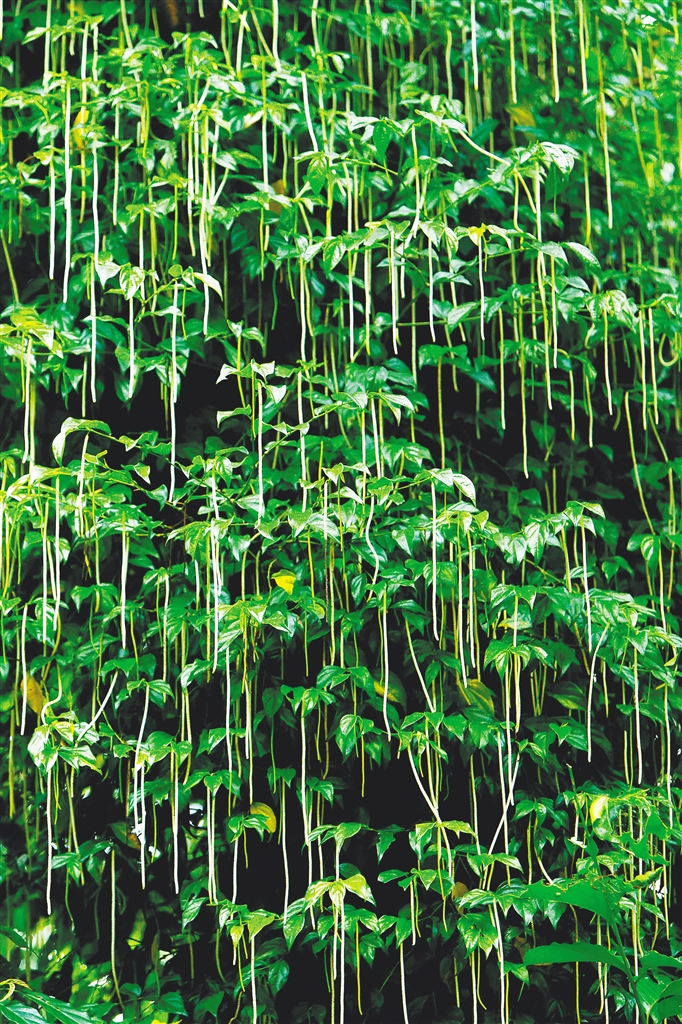
Piper Hancei in Hainan’s rainforest. LI TIANPING
Statistics provided by the Jianfengling Ecological Station show that the average carbon sequestration capacity of Jianfengling’s tropical forest is 2.38 tons per hectare per year, which is much higher than the carbon sink capacity of 0.6 tons in Hawaii’s tropical forests, 0.63 tons in Africa's tropical forests and 1.24 tons in the Malay Peninsula’s tropical forests.
However, a forest may turn into a carbon pollution source in some cases. Forest carbon is released when trees burn or when they decay after dying (as a result of old age or of fire, insect attack, or other disturbances).
Recently, the Provincial Forestry Bureau issued a work plan for expanding Hainan’s forest carbon sink capacity. The plan proposes that over 82,000 acres of trees should be planted across the province in the next five years, with the goal of planting over 16,000 acres each year. In addition, the supervision of forests around the island will be strengthened, fire prevention and emergency response mechanisms will be improved, and a pest monitoring system will be stepped up in order to increase the capacity of the carbon sink by afforestation as well as reduce carbon emissions from natural and man-made disasters.
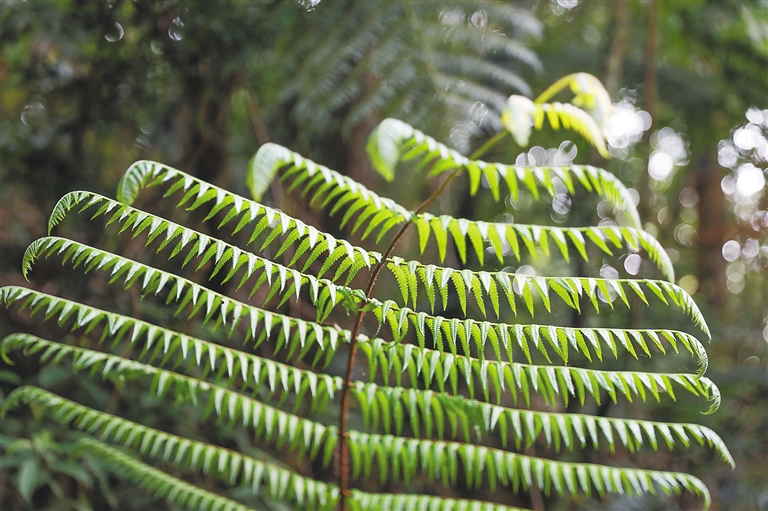
Flying Spider-monkey Tree Fern (Alsophila spinulosa) in Hainan’s rainforest. LI TIANPING
"Currently, every hectare of tropical rainforest in Hainan can absorb 1 to 2 tons of carbon every year, with carbon sequestration capacity increasing 3% to 4% each year," said Zhou Zhang, Deputy Researcher of the Chinese Academy of Forestry, adding that Hainan's tropical rainforests will have greater carbon sequestration potential if the forests are well protected and utilized in a reasonable way.
Hainan launches pilot carbon sink trade programs
In Guizhou, farmers can get RMB 3 on a carbon sink trade platform for each photo of a tree they have planted. In Fujian, a company operating online carbon sink projects has built an equity trading center, which has reduced 180,000 tons of carbon emissions and completed transactions totaling RMB 2.55 million (USD 0.38 million). In Shaanxi, the government encourages energy and chemical corporations to purchase carbon sink vouchers to offset the carbon emitted during production.
The above cases and measures make it obvious that forest carbon sinks are considered quantifiable, tradable, value-added, sustainable products. This not only helps transform the forest’s ecological value into economic benefit, but also promotes a benefit-oriented mechanism that profits forest protectors, makes users of forests pay for what they use, and makes forest destroyers pay compensation.
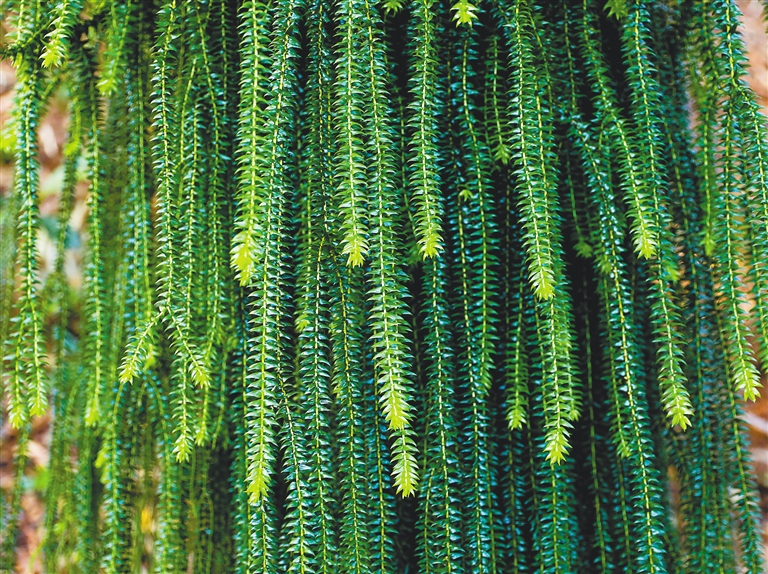
Coarse Tassel Fern (Phlegmariurus phlegmaria) in Hainan’s rainforest. LI TIANPING
Over the next two years, Hainan will develop several forestry carbon sink trading projects, taking into account international and national carbon sink trading conditions. In addition, relatively concentrated afforestation or protection projects will be selected, and the province’s first group of China Certified Emission Reduction (CCER) projects will be developed and begin to participate in the national carbon market. Additionally, banks and financial institutions will be encouraged to innovate financial products about forestry carbon sinks and explore related businesses such as pledged loans and price index insurance for carbon circulation, carbon storage, and carbon pledges.
"At present, the province has selected a well-forested area as a pilot zone for developing forestry carbon sink products. Then companies, individuals, and other carbon emitters can voluntarily purchase carbon sink products through the trading platform, which will increase vegetation coverage and farmers' income as well," said Chen Yiqing, Dean of the Hainan Academy of Forestry. The project is expected to complete its first transaction this year.
FTP Expert Talks | Xiaodong Lee, Vice President of the Internet Society of China and Founder of the Fuxi Institution: Hainan is the "Nebula" of New Digital Youth
09:47, 12-September-2025Hainan Issues Offshore RMB Bonds in HK for 4th Consecutive Year
09:46, 12-September-20252025 Hainan FTP International Students Content Creation Project
02:28, 12-September-2025What Makes "Hainan Travel" So Appealing?
09:38, 11-September-2025100 Days to Go: What's Next for Hainan-Hong Kong Cooperation?
09:38, 11-September-2025Expert Talks Ep. 4: The Future of the FTP's Digital Economy
09:35, 11-September-2025By continuing to browser our site and use the services you agree to our use of cookies, Privacy Policy and Terms of Use. You can change your cookie settings through your browser.

